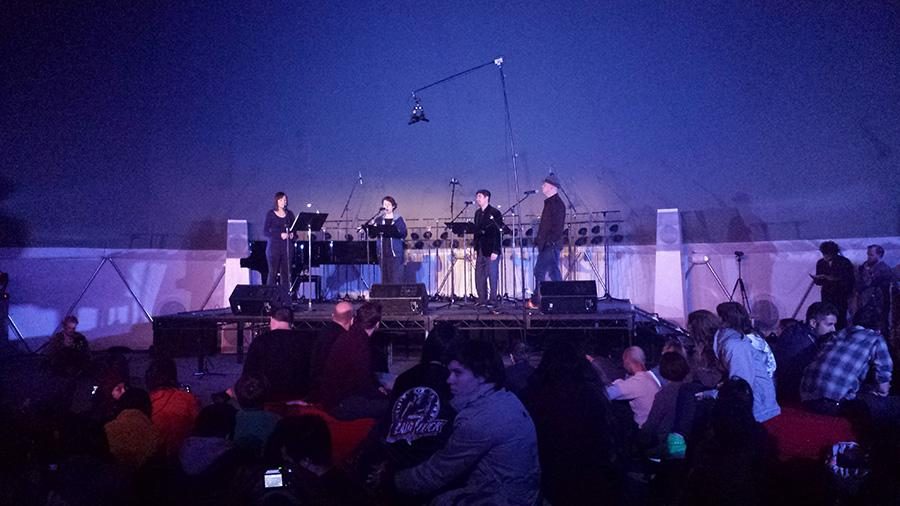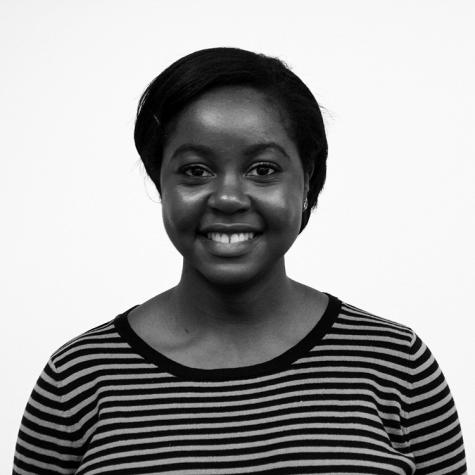MoMA PS1 showcases experimental, electronic music
October 22, 2014
New Amsterdam Records described “Sound / Source,” an event held at Museum of Modern Art PS1 on Oct. 19, as a “day-long electronic music festival” on its website, but, contrary to the image that phrase conjures, there were no bros in tank tops or neon clothing to be found. Instead, what transpired was a series of abstract performances and sound installations that challenged the notions of electronic music and the role technology plays in the making and performance of music.
Part of MoMA PS1’s Sunday Sessions, a weekly series of performance art and discussions, “Sound /Source” featured pieces from artists from the experimental label New Amsterdam Records including Olga Bell, Daniel Wohl, Vicky Chow and Roomful of Teeth, as well as other guests including Tyondai Braxton, Lesley Flanigan and an installation by Nate Boyce and Daniel Lopatin of Oneohtrix Point Never.
The festival took place in several rooms inside the PS1 complex, including performances in the dome, on the roof, in the boiler room and even a sound installation by experimental music group Lucky Dragons in the elevator, which played from floor to floor.
The performances in the dome were particularly engrossing because they were illuminated only by soft neon lighting, creating a dreamy atmosphere and refuge from the brisk fall weather. The organizers took advantage of the possibilities of the space by setting up speakers around the inner edges of the dome. When members of Roomful of Teeth performed vocal selections from Paul Lansky’s “Idle Chatter” series, the hum of their voices surrounded the audience. When alternative DJ Tyondai Braxton took the stage for a live set, the coarse synthesizers shocked the audience with Braxton’s industrial-sounding take on EDM.
The day’s standout performance was by Daniel Wohl, Caroline Shaw and Olga Bell, accompanied by a video installation by Lily Morris and Lily Fang that took place in the Richard Serra room on the roof. Shaw and Bell’s voices floated beautifully over Wohl’s signature electronic tinkling and vaguely orchestral instrumentation. The images of a flock of birds swirling and a crowd of people bobbing back and forth on two blue-tinted projector screens were oddly soothing companions to the music.
A defining performance came from Lesley Flanigan, Maria Chavez and MV Carbon, who played pieces on the PS1 Terrace using recorders, microphones, a sound board, an electric cello, a vinyl turntable and Flanigan’s own vocals to create an unlikely electronic music experience. Using their technologies in unexpected and unconventional ways, like pairing the sound of the electric cello with the feedback from the microphone, they managed to capture the spirit of “Sound / Source” — each artist was in some way using technology as an instrument.
While the music of “Sound /Source” may not be the most sonically pleasing, and certainly will not appeal to everyone’s tastes, New Amsterdam’s intentions are admirable in trying to showcase electronic music not bound by classical rules and traditional song structures. It was refreshing to hear how different elements of musical technology interact with each other naturally. Mainstream electronic music could stand to inherit some of the freedom and originality that was on display from these talented and innovative artists.
A version of this article appeared in the Wednesday, Oct. 22 print edition. Email Ife Olujobi at [email protected].



























































































































































